
REPORT
24 November- 5 December: Korogwe Campaign Tanzania
Korogwe is a town of just over 60,000 inhabitants located in the Tanga region of northwestern Tanzania. Its communications with the main airport of the country, the Julius Nyerere International Airport located in the populous and old capital of the country, Dar Es Salaam, are by land by means of a road irregularly asphalted along almost 300 km and that becomes interminable in the almost 6 hours of journey that it occupies.
The most feasible connections from Spain to Tanzania are via Istanbul and can normally be reached from our country with only one stopover. Korogwe’s pattern of religious profession mirrors that of the country, with 80% of the population divided between Muslims and Catholics and the remaining 20% being Anglicans and Lutherans. The country has a republican government and the situation there, despite Somalia’s proximity to the north, is fairly calm.
Korogwe is home to an important Catholic congregation, the Congregation of the Sisters of Our Lady of the Mountain of Usambara, which was established in 1954 and plays an important role in helping local society, including the coordination of medical care through Dr Avelina Temba, who is also a surgeon and a person who gives 24 hours of her life to help those most in need, with a special emphasis on health.
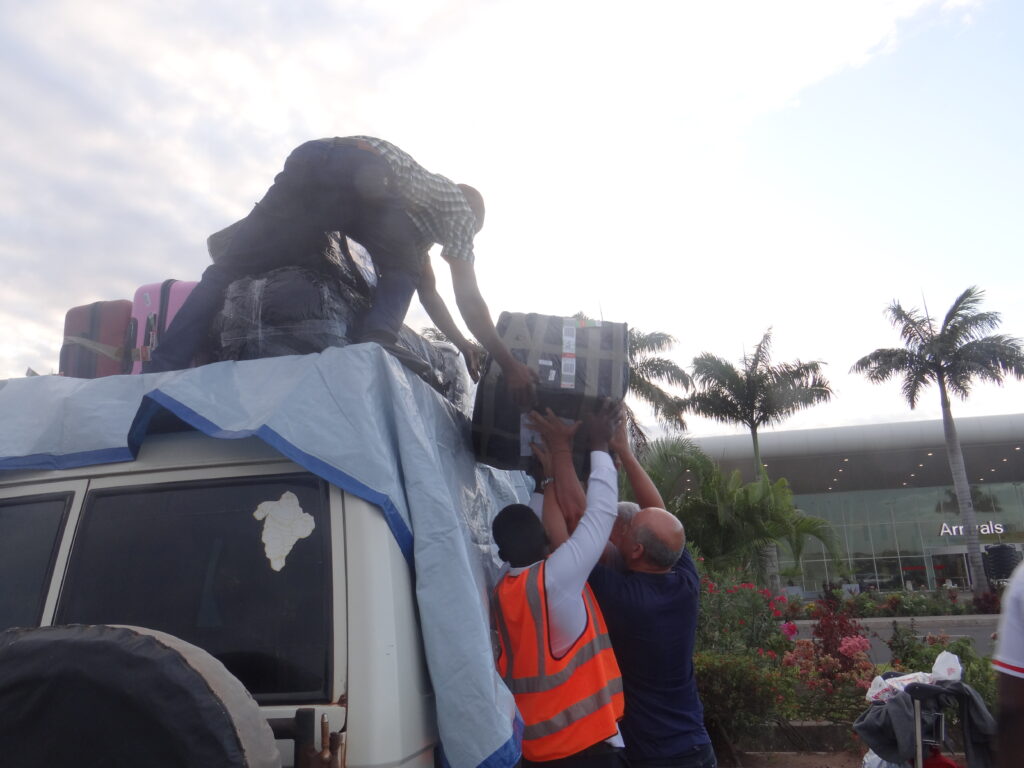
The physical space where the campaign took place is the Korogwe Town Hospital in Magunga, which was founded in 1952 and is a fairly basic hospital typical of developing African countries.
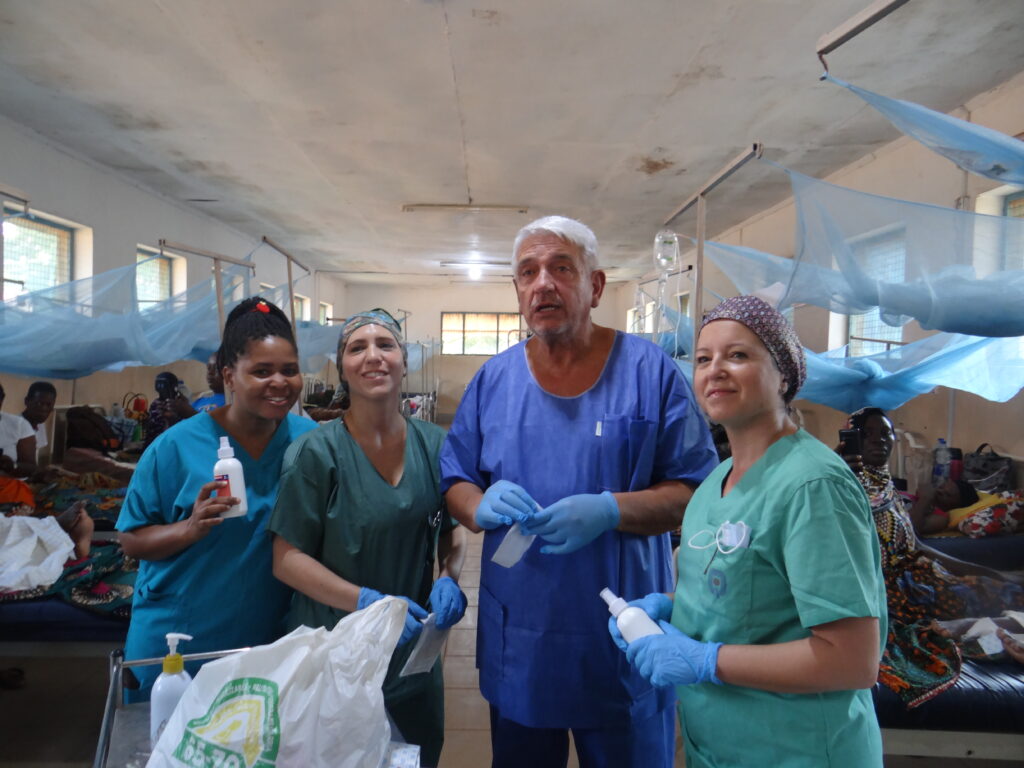
It has two basic spaces that can be used as a consultation room and a waiting room, as well as a bedding area with separate spaces for men, women, children and postpartum women, and a surgical block with two operating theatres.
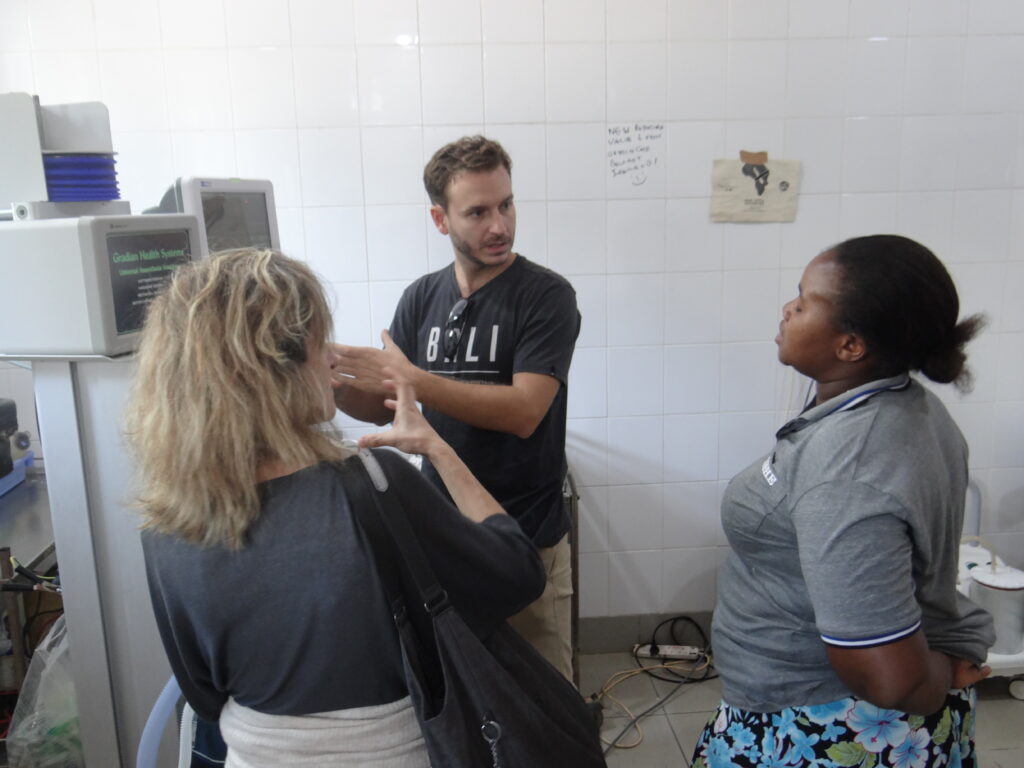
Both operating theatres are equipped with an diathermy generator that works properly and only one of them has a general anaesthesia machine that has been valid during the days of the campaign, except for specific moments when there were power outages and it obviously gave way.
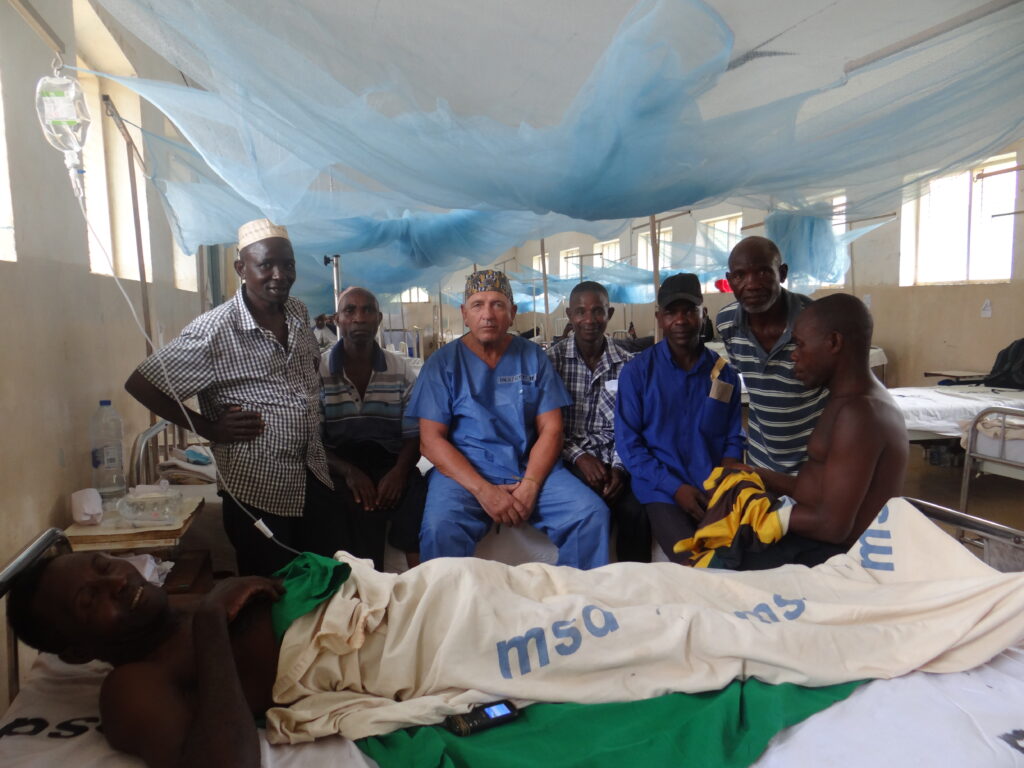
Both operating theatres had air-conditioning systems which were switched on intermittently when it was hot and made our work there quite comfortable. Sister Avelina Temba is the person who swims and runs the hospital and is widely respected by all the staff.
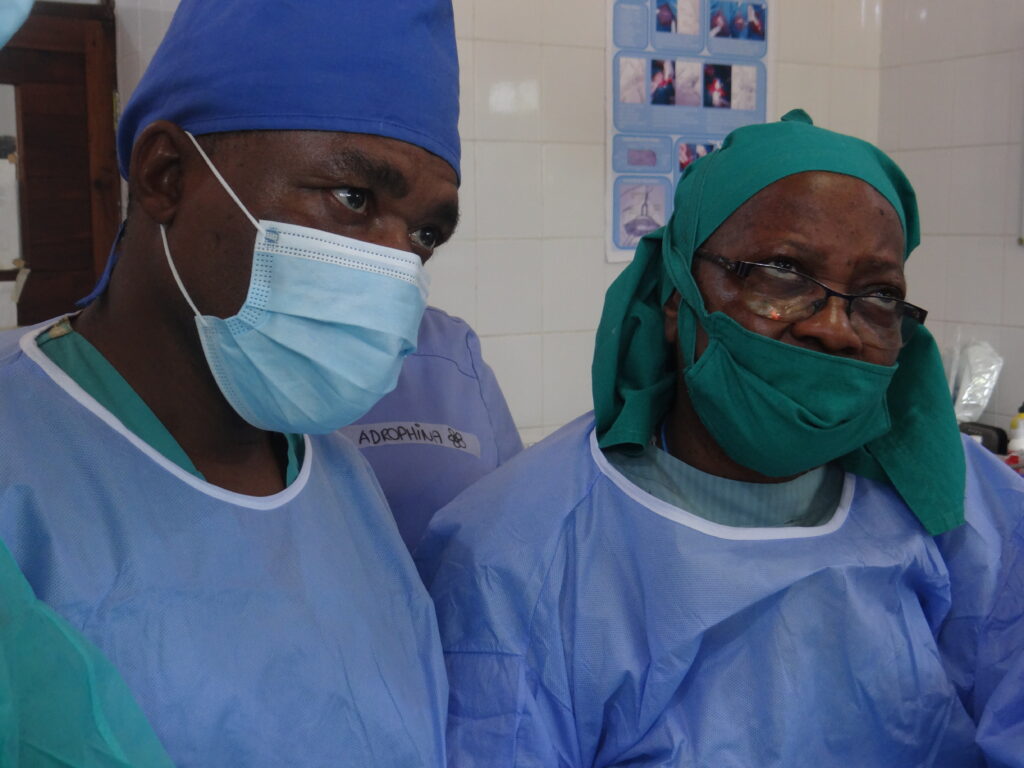
Throughout we have had local doctors and two surgeons from the region working closely with us, with special mention for Dr. David Siwiti who has accompanied us as well as Sister Temba every day in and out of the hospital. In the surgical area there are basic changing rooms with a latrine and a third physical space that can be used for emergencies and caesarean sections, as was the case during our stay.
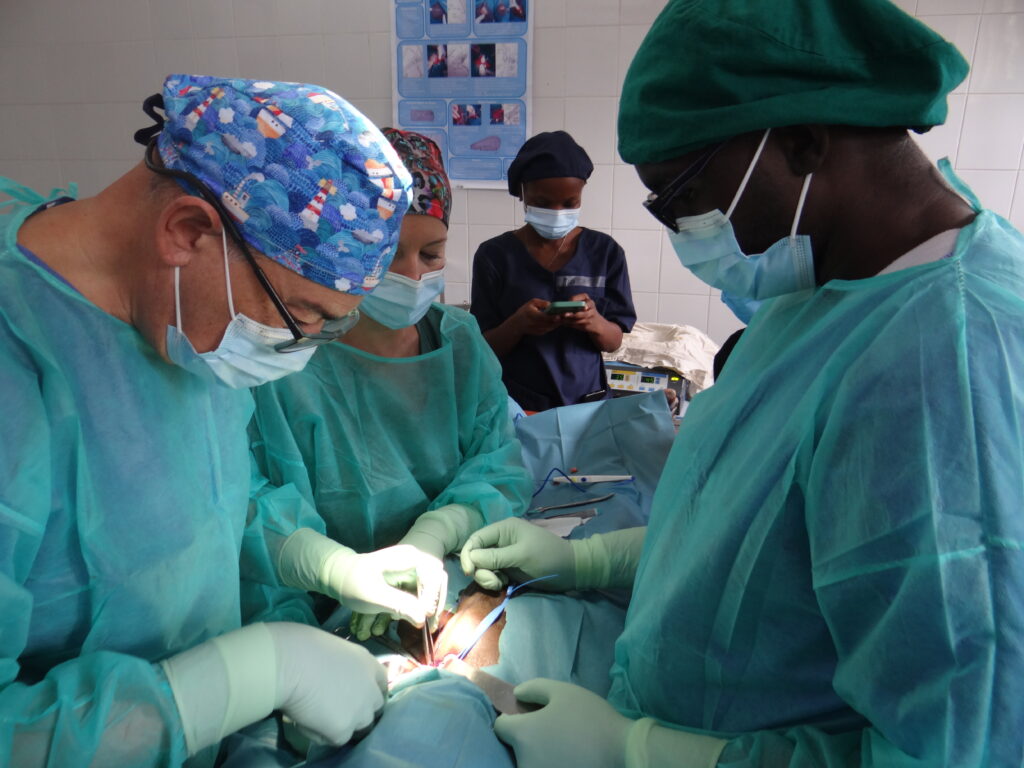
Sister Temba’s prior coordination and preparation for the campaign has been done directly with me via whatsapp and email in the three months prior to the campaign, so that we have been registered and our temporary registration licenses as admitted doctors by the Medical Council of Tanganyika; all surgical material was also registered in a letter of donation to Korogwe Hospital to facilitate the administrative access of everything we have brought.
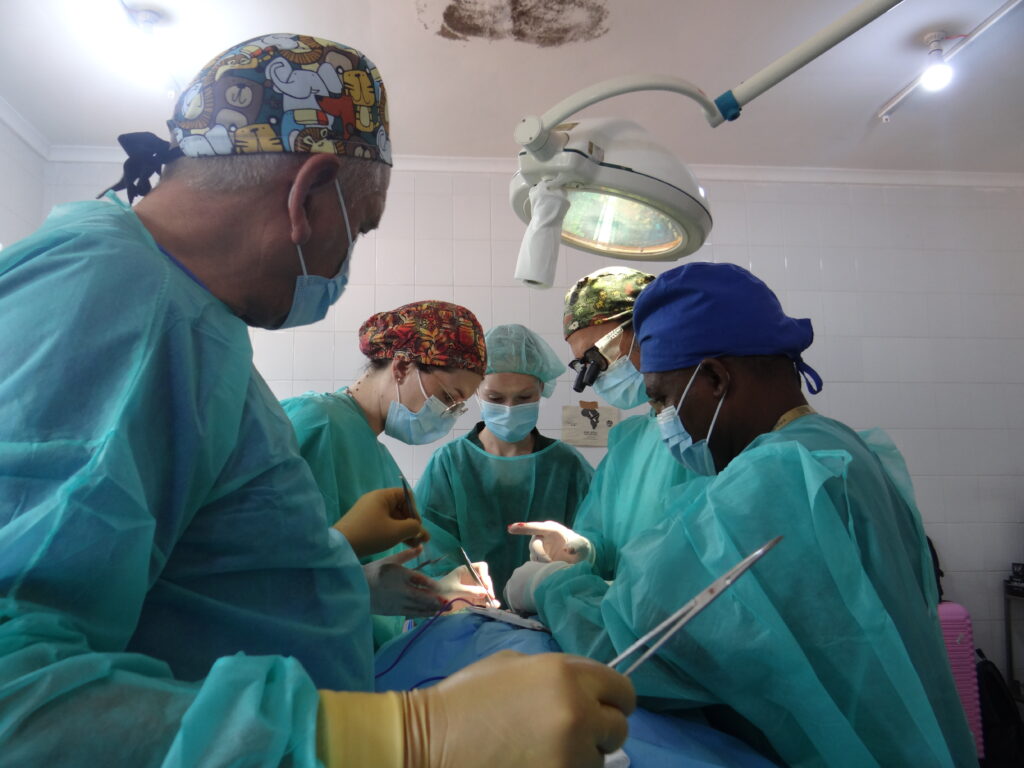
About 15 minutes drive from the hospital is a small hotel where we have stayed and which is usually the reference point for the teams that carry out the cooperation campaigns. We had booked 4 double rooms for the 8 members of the team and we could say that it is a quite acceptable and comfortable place as the rooms have a king-size bed and a bathroom with toilet and hot water for a shower. With the help of Sister Temba, we had already booked half board with breakfast and dinner, so the price per day per person for half board was 45 Euros (120000 Ugandan shillings) and both breakfast and dinner were quite good, as they were prepared on the spot on request from the hotel menu and included unlimited carbonated drinks and beer in the price. As for the food, we always had lunch in the surgical area and in groups, so as not to interrupt the surgical activity, and we alternated the local food offered free of charge by the hospital with local products (basically cold meats and preserves) that we had included in the luggage we had brought with us.
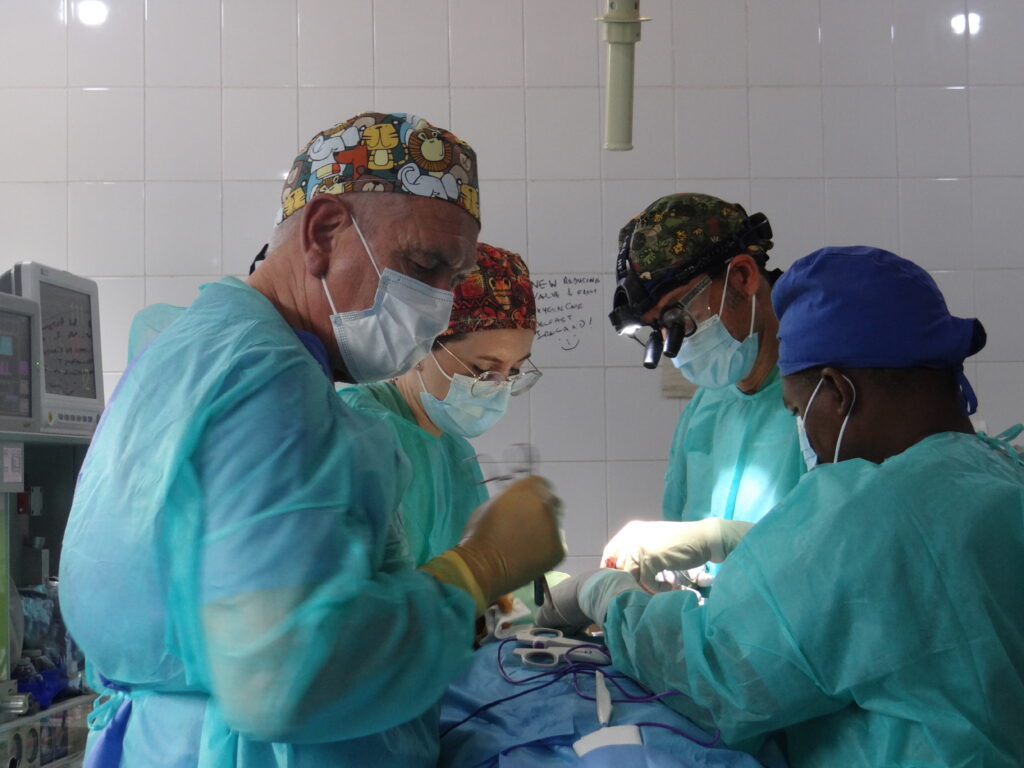
The mission team consisted of three surgeons (César Ramírez, leader of the campaign, Javier Moreno and Marta Roldón), two anaesthesiologists (Carlos Ávila and Gloria Hernández) and three nurses (Francisco Gómez, María Castro and Verónica Fernández). Except for Gloria, who came from Madrid, all the other members of the team live in Malaga and we met at Malaga airport on the 24th of November 2022 and from there we flew to Istanbul, where we stayed overnight to catch the flight to Dar es Salaam the next day at 19.30 hours, arriving at the airport at 3 am on the 26th of November, where Dr. David Siwiti was waiting for us with two vans to take us and the transported material, a total of 390 Kg that included a Ligasure donated by Medtronic for the campaign and the usual for its development (sutures, sterile surgical fields, single-use and sterile gloves, gauze and compresses, sterilising solutions, more than 150 sterilised meshes of different sizes, 50 Ligasure terminals and 4 boxes of surgical material for endocrine surgery that are our property and always accompany us). The process of arrival at the airport and going through customs was quite painful, as they kept us waiting for two hours in the early hours of the morning and made us open all the suitcases and packages despite the fact that they were perfectly labelled, numbered and documented with the certified letter from the NGO Cirujanos en Acción.
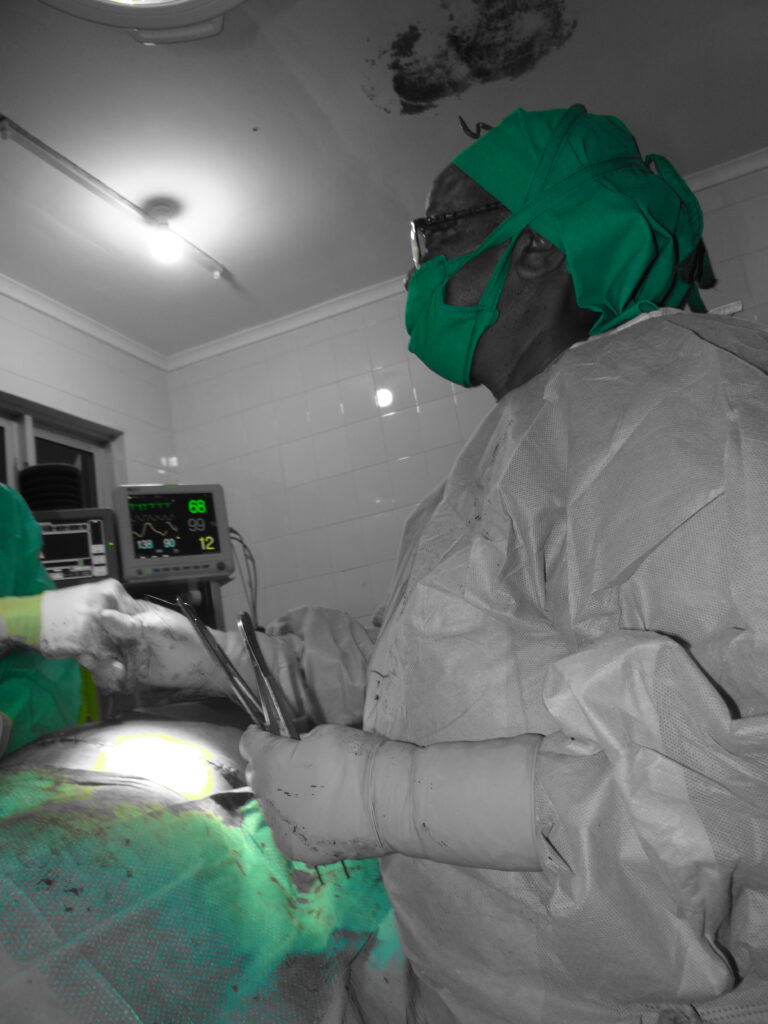
On the day of arrival, Saturday 26 November, we spent the day evaluating the patients that Sister Temba had previously selected according to the criteria we had agreed on: hernias of all types (including children from the age of 4), hydroceles, soft tissue tumours, goitres and abdominal masses, as well as any adult pathology that might require surgery. On that day we selected 80% of the patients to be operated on and the remaining 20% came on successive days.
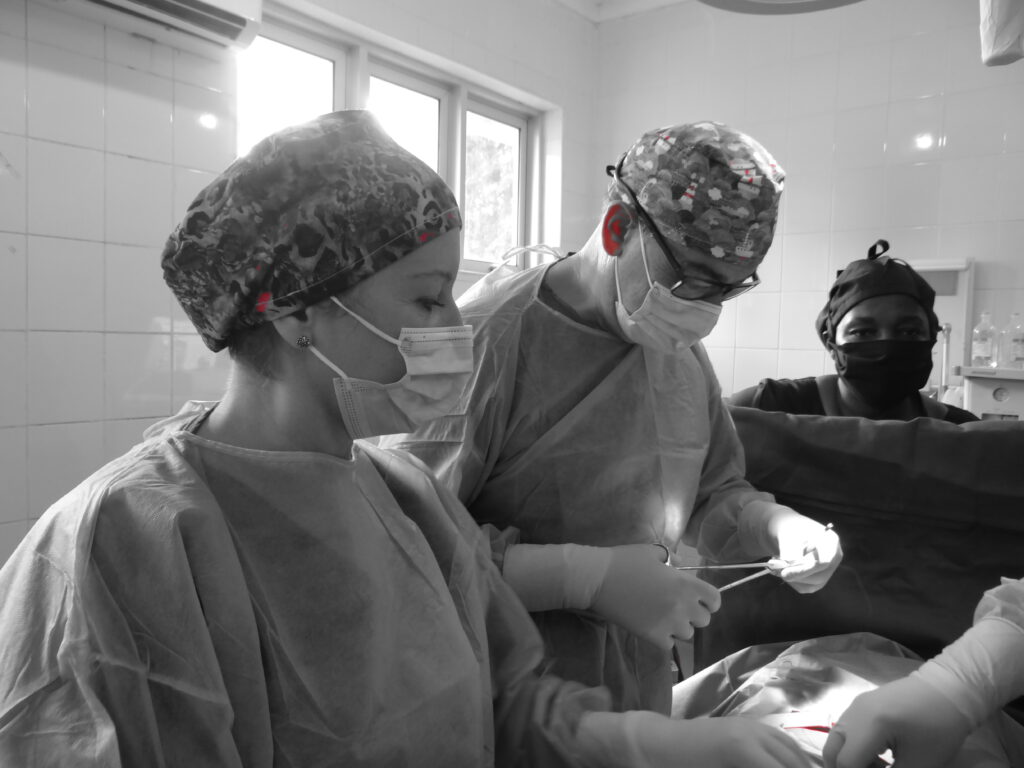
There were seven days of surgery in total, starting on 27 November and ending on 3 December, all of them full days except for Saturday 3 December when the activity ended at 5 pm. During these seven days, the routine was quite scheduled: we met in the hotel dining room at 7 am for breakfast and were picked up half an hour later to be taken to the Hospital. At 7.45 am we would start the preparation of the operating theatre and at the same time the ward rounds of the operated patients, in order to coordinate the start of the actual surgical activity at 8.30 am.
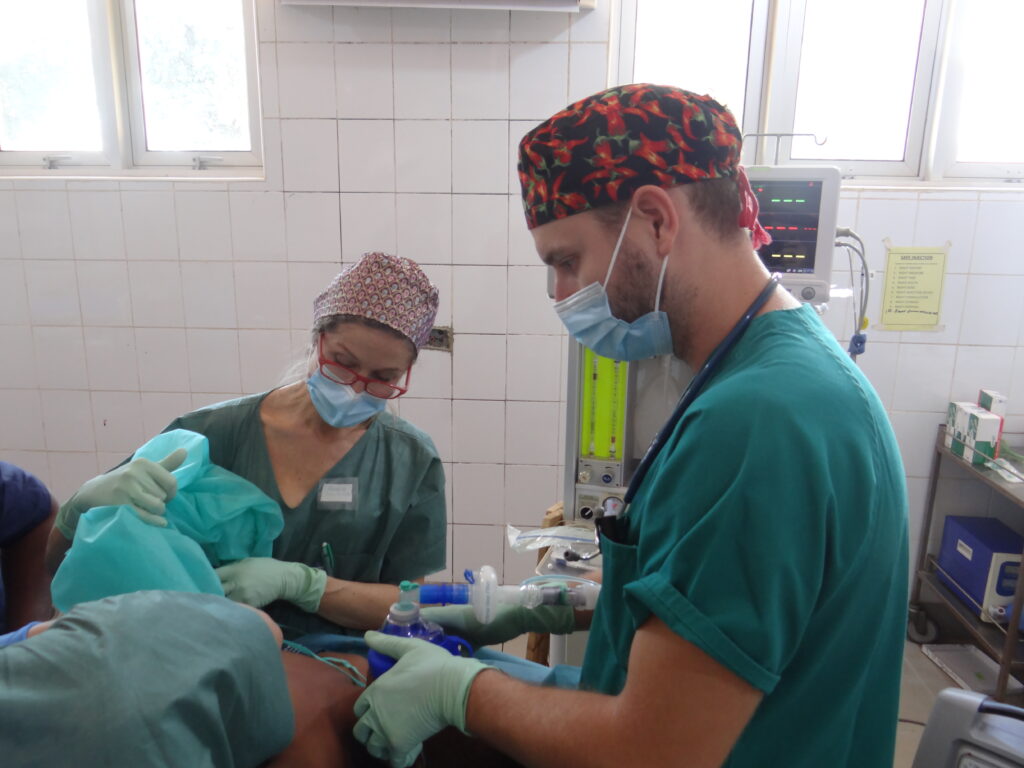
Although Sister Temba told us that ideally we should finish the day’s work at 6 pm (as it was time for nightfall and the staff had to leave the Hospital and go to their homes, most of them on foot and sometimes “not short” distances), I explained to her that in order to carry out all the activity we needed to operate later and we finished at an average time, which was 9.30 pm.
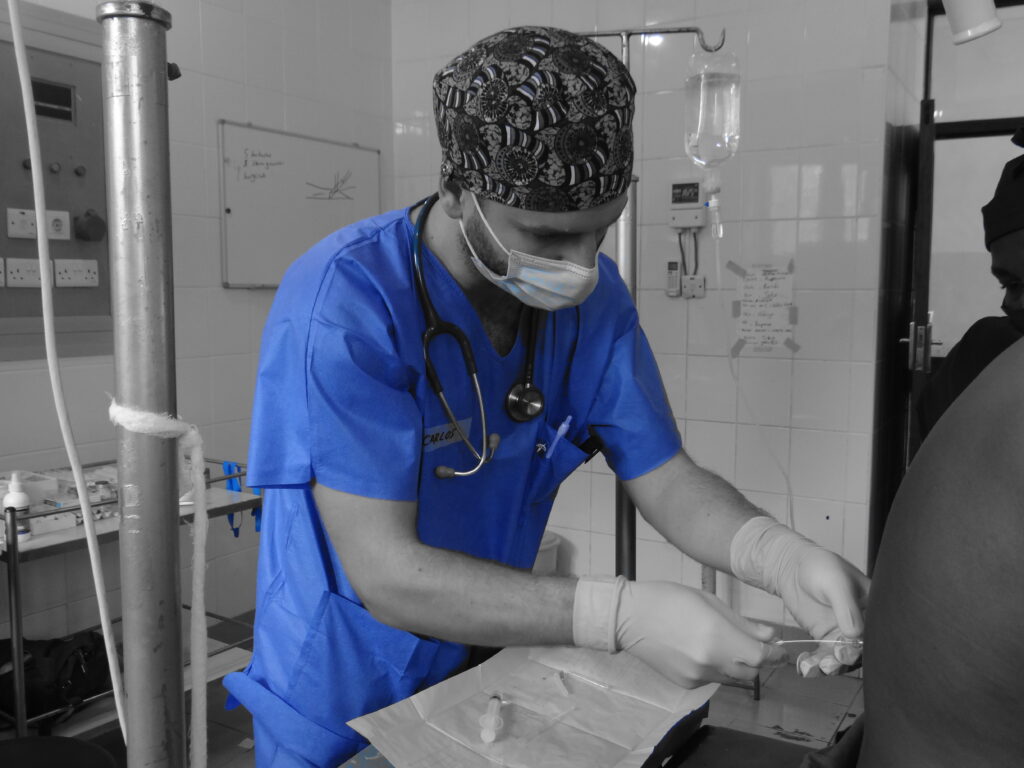
As compensation, we have thanked the staff for their collaboration with a donation of 1000 US dollars which we have given to Sister Temba to distribute among the workers who have collaborated with us. We worked every day taking advantage of the space in the two operating theatres, giving preference to the general anaesthesia theatre for the more complex goitres and hernias.
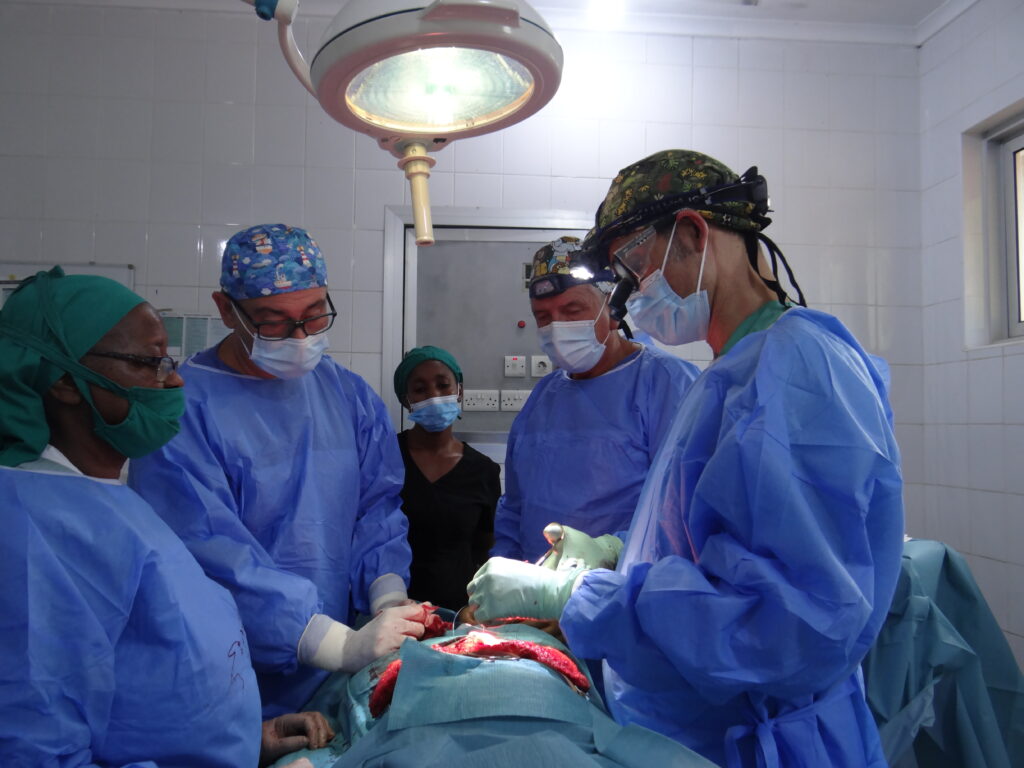
On the afternoon of the 3rd of December, Sister Temba took us to visit her convent and to pray in front of Our Lady of the Mountain, and afterwards she entertained us with an aperitif made by the sisters themselves; for us it was a great experience to share this space of life and prayer with the sisters and it is something we were very grateful for. In the evening of the same day we organised a dinner in our hotel where we invited all the hospital staff who have worked with us and we shared a very pleasant farewell. It is interesting to note that it is always a good idea to bring your own surgical instruments as the process of washing and sterilising the material is sometimes not very operative and can be a handicap for a high pace of work.
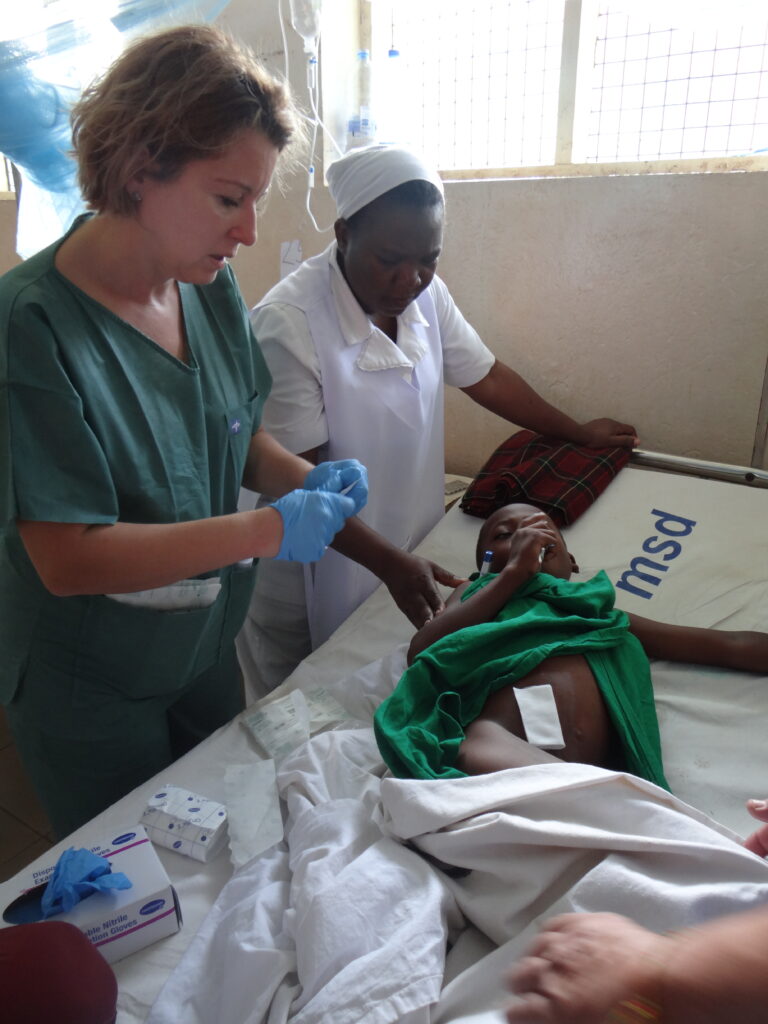
The total number of patients who underwent surgery was 102, and 133 surgical procedures were performed on them, distributed as follows:
1.-Twenty-four cervical endocrine surgeries (including 13 total and 11 partial thyroidectomies) with no major complications, all patients being discharged within 36 hours after surgery. No cases of hypocalcaemia were recorded in the mid-term follow-up, with only 3 patients presenting immediate dysphonia, and in one case a reoperation was required due to bleeding through the surgical wound in a patient who had undergone surgery for a giant endothoracic goitre with a large retrosternal component.
2.-Sixty-three patients underwent surgery for hernial pathology, divided into 43 inguinal hernias (including 5 that were reproduced and 9 of them bilateral), 16 primary hernias of the linea alba (pure umbilical or epigastric) and 7 eventrations (of which four were large and were treated with associated abdominoplasty). Eleven of these hernia surgeries were performed on children under 12 years of age.
3. -24 patients were operated on for hydrocele of different sizes, 5 of whom were bilateral, and two orchiectomies were performed for testicular tumour pathology and two surgeries for cryptorchidism in boys aged 7 and 9 years. Finally, 3 emergency surgeries were performed, two of them appendectomies for advanced acute appendicitis and one perforation of the hollow viscera with biliary peritonitis due to acute blunt trauma requiring double intestinal resection. An exploratory laparotomy was also performed on a 17-year-old boy with an unresolved abdominal mass that turned out to be an extensive peritoneal carcinomatosis of probable sarcomatous origin that was sent for biopsy.
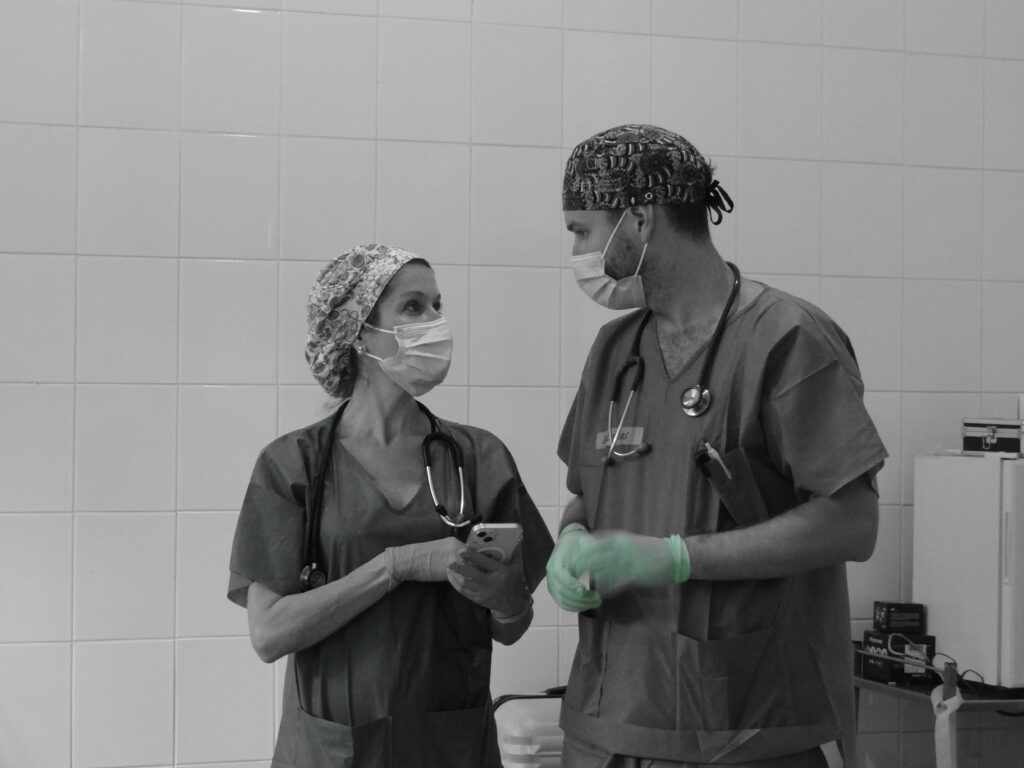
It is important to mention that thanks to the collaboration of Mr. Santos Velasco, a licensed pharmacist from Malaga, it has been possible to provide Tanzania with LT4 thyroid hormone replacement for almost 2.5 years for the 13 cases of goitre in which total thyroidectomy was performed, as well as 60 boxes of oral calcium in case it was necessary and 100 boxes of Ibuprofen 600 mg which were given to each patient operated on for the home treatment of postoperative pain. It is very important to highlight the high degree of collaboration and good atmosphere that we have had at all times and that we have tried to reciprocate by operating on as many patients as possible and counting on the collaboration of at least one local surgeon (if not two) as a scrub assistant in each surgery. We have taught as much as we could and have offered to assist local surgeons in training, who have performed some less complex procedures. Without a doubt, Dr. and Sister Temba is an example of how to organise a campaign and I hope that we will soon be able to return there to continue helping people in need.
Dr. Cesar Ramirez
Team leader

